Busworld Turkey 2024: Karsan press visit
By Bradley Osborne - 18th July 2024
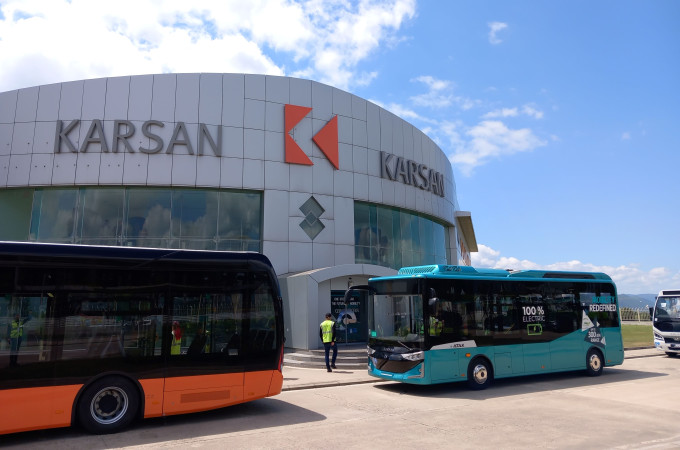
Entrance to Karsan HQ
Turkey – As part of the press trip to Busworld Turkey last month, we were taken on an excursion to the neighbouring city of Bursa, the heartland of the Turkish automotive industry. To the west of the city, in a village called Hasanağa, lies the headquarters of Karsan Otomotiv Sanayi ve Tic. A.Ş., or ‘Karsan’ for short. Though the company’s history extends back to 1966, it is only in the past decade that it has emerged as an original equipment manufacturer of note in the commercial vehicle industry. Today, it has earned a reputation as a “dark horse” among the Turkish manufacturers, a previously unknown company which has very quickly surged to prominence in the domestic and European markets. Karsan apparently owes its growing recognition to its swift adoption of new technologies: for instance, it was the first to launch an autonomous city bus (to Level 4) on the European and North American markets in 2021 (the ‘Otonom e-Atak’).
The clue to Karsan’s humble origins is in the name: ‘Karsan’ is a portmanteau of “karoseri” and “sanayi” (i.e., “vehicle body industry”). It was established as a bodybuilder and built up a reputation in this field until 1981, when it was licensed by Peugeot to make ‘J9’ minibuses. Karsan produced these for a quarter of a century before rebadging them as the ‘Karsan J9 Premier’ in 2006, the very first vehicle made by the company to carry its name. It was replaced by the ‘Karsan J10’, which was built between 2010 and 2015.
From the 1980s, Karsan developed into a crucial contract manufacturer for European and Asian OEMs. Besides Peugeot, other companies which Karsan has built vehicles for include Fiat, Renault, Renault Trucks, Citroën, and Hyundai. Although Karsan has since developed its own line of vehicles, contract manufacturing remains one of the core pillars of its business model.
However, it is the Karsan-branded buses which interest us, and as the company evolves into an original equipment manufacturer in its own right, the contract manufacturing side of the business is increasingly superseded by the bus side. Karsan’s mainline bus models – ‘Jest’, ‘Atak’, and ‘Star’ – were introduced in 2013. Five years later, Karsan launched its first battery electric model, the ‘e-Jest’, which has since been followed by the ‘e-Atak’ and the ‘e-Ata’.1 At IAA Transportation 2022, Karsan expanded its range to hydrogen with the fuel cell electric version of the e-Ata. Otherwise, its battery-powered buses are the fruit of a partnership with BMW, which supplies its ‘BMW i’ batteries to Karsan. In fact, the e-Jest began as a joint project between Karsan and BMW, and its powertrain is made up primarily of BMW components. For the e-Atak and e-Ata, which came later, Karsan relies upon the Dana TM4 central motor and ZF electric portal axle respectively.
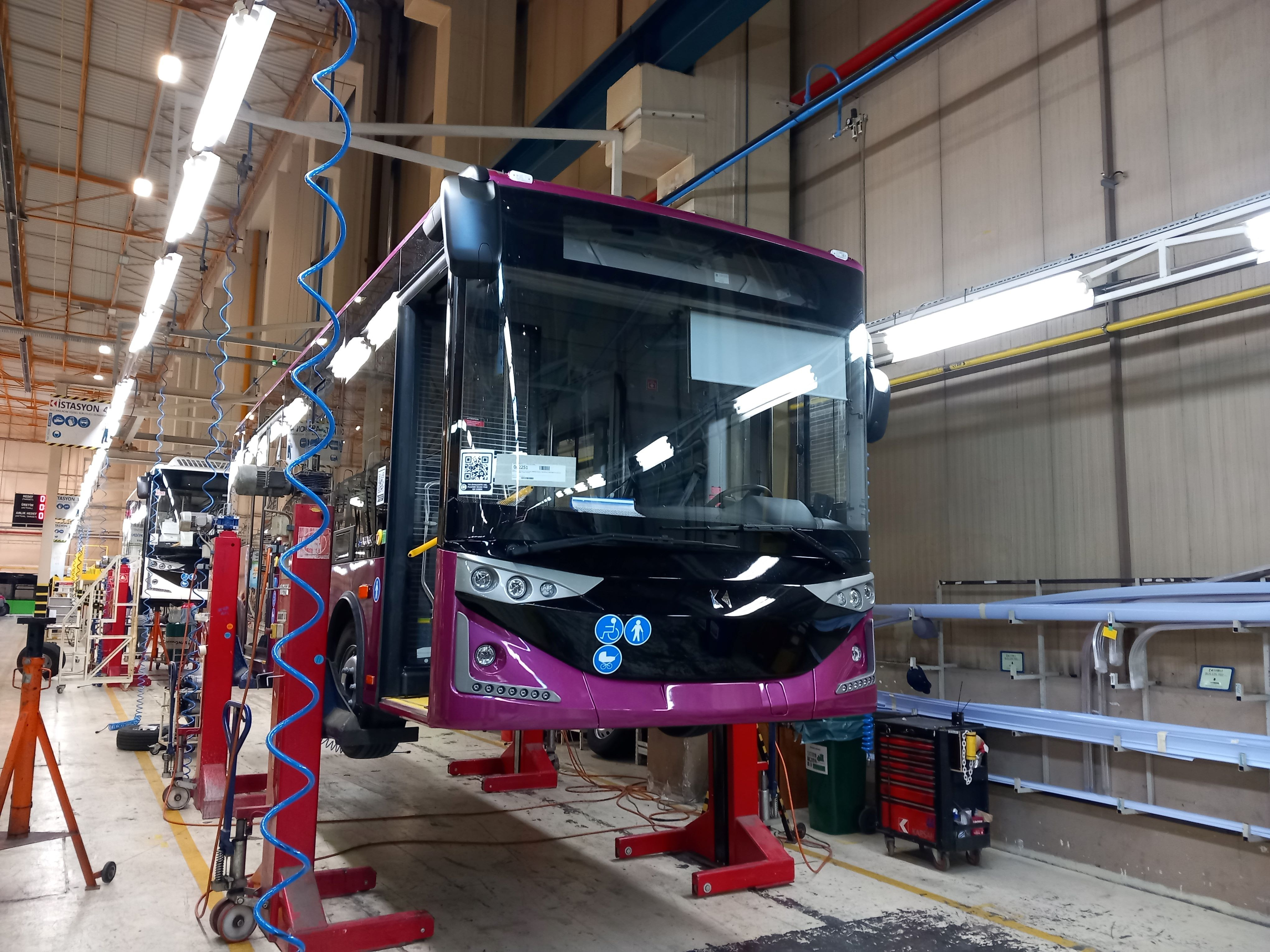
Ata production line
Some facts and figures about Karsan
Karsan operates two sites in Hasanağa. The first Hasanağa factory is where it makes the body frames for all the vehicles it produces. In a 90,000-square-metre facility, Karsan carries out the cutting, perforating, bending, and welding of the raw material profiles and manufactures the frame fixtures and complete panels. The frames are then fitted, completing the vehicle body. On a three-shift pattern, Karsan can produce up to 65,000 vehicles per year.
The second Hasanağa factory is the one which we visited during our tour of the headquarters. In a 10,000-square-metre building, Karsan assembles all its bus models. Working on a single shift, this factory can produce up to 4,500 buses per year. A third site, called the ‘OSB Factory’, is located in the centre of Bursa and is used to build tractor cabins and bus bodies for third parties. At the OSB Factory, Karsan has its cataphoresis (or anti-corrosion treatment) facility, which serves Karsan-branded vehicles and those of other brands. The whole plant covers 25,000 square metres.
Moreover, the Karsan headquarters today comprises a research and development team of around 200 personnel.
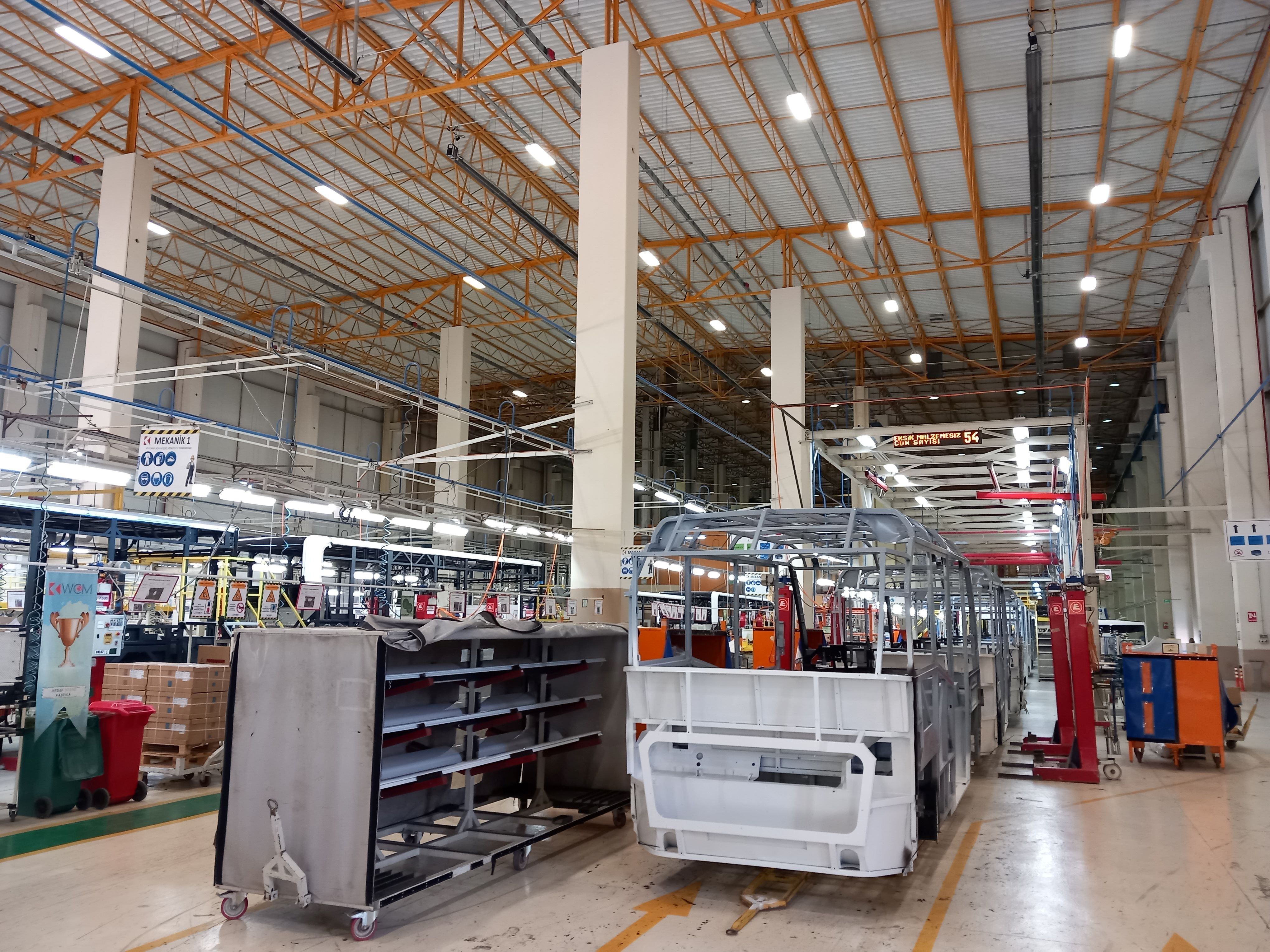
Jest at the start of the production line
Bus assembly at Hasanağa
Inside the bus assembly plant, we were shown three production lines, one for each of the three models developed in-house: Jest, Atak, and Ata. Each line was organised in roughly the same fashion, primarily involving manual labour to assemble the parts onto the body and chassis across twenty-one stations. Partway down the line, the bus is lifted up by a machine to allow for the installation of parts onto the underside of the chassis. At this stage, the battery packs are fitted onto the electric models. The bus is brought down to ground level again for interior fittings before completion.
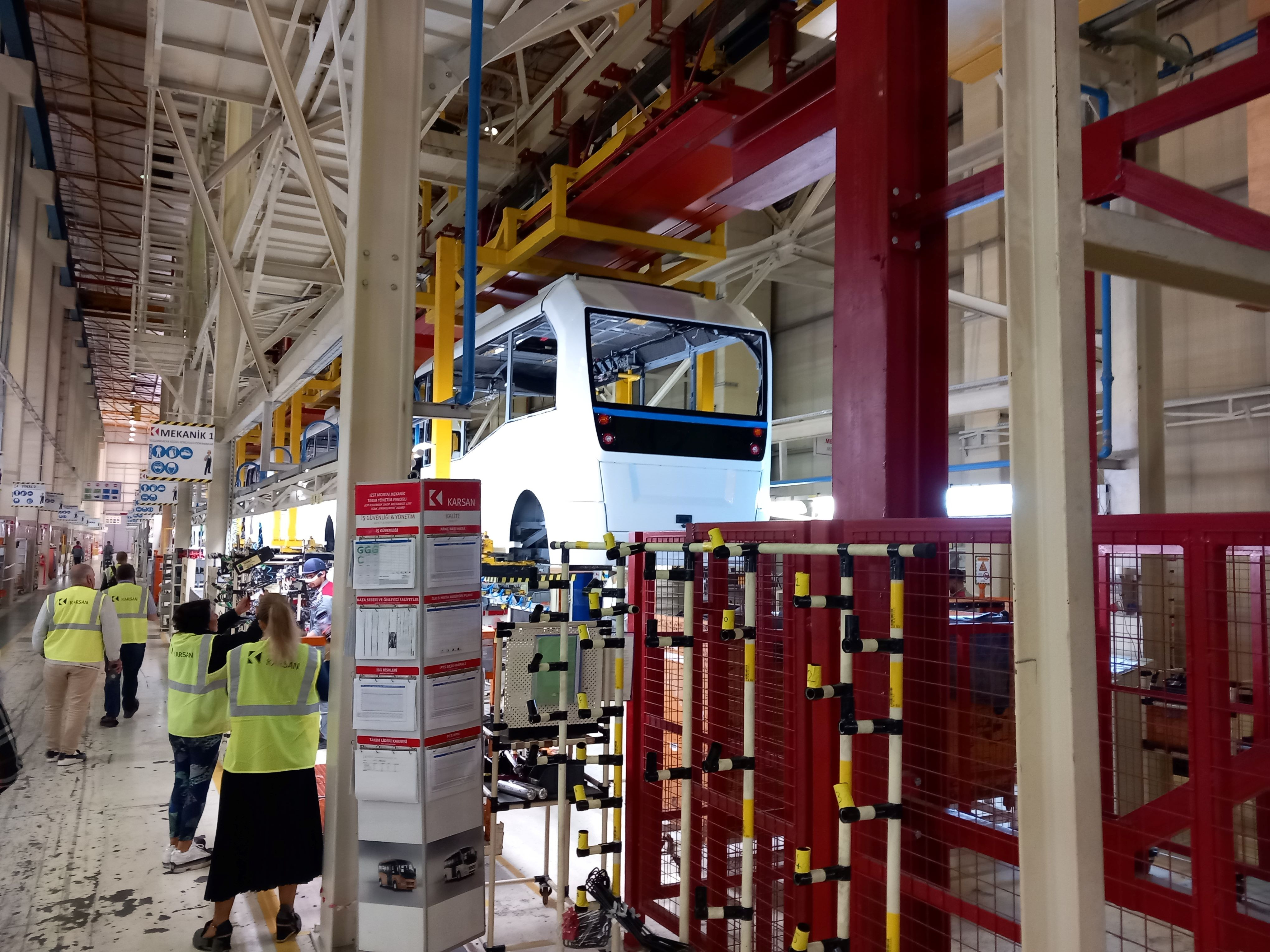
Jest production line
The press were told that the plant can produce up to 6 vehicles on an average day. Ordinarily, three of these would be Jest minibuses, two would be Atak midibuses, and the last one would be an Ata bus. The combustion and electric variants are all produced on the same line.
We were also shown around the onsite paint shop, which prepares the vehicle frames and chassis before they are sent across to the assembly plant. At fourteen stations, the framework is cleaned, primed, and then baked in large ovens. PVC undercoating and anticorrosive coats are also applied in the paint shop. One section which were not shown was the welding shop, where Karsan builds the body frames before sending them to the paint shop.
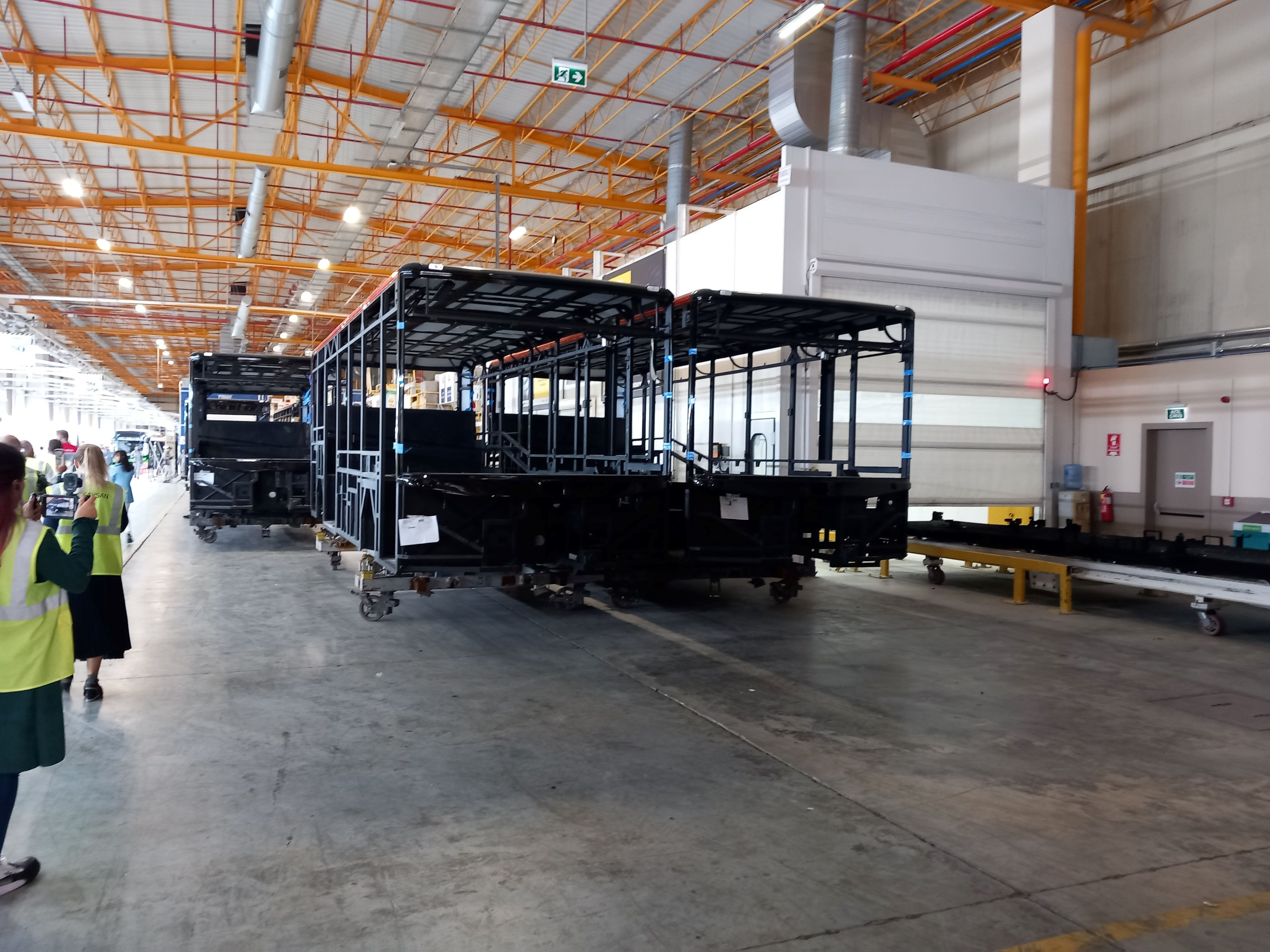
Treated body frames coming out of the paint shop
Karsan at Busworld Turkey 2024
At a press conference during the show, Muzaffer Arpacioğlu, Deputy General Manager, Commercial at Karsan, discussed the company’s progress over the last five years and its future plans.
Karsan launched its first e-bus over five years ago. Since then, it has delivered over 1,100 e-buses to 23 countries, including Turkey, Japan, and European and North American markets. It claimed a 6.2% share of the European electric bus market in 2022 and a 5.9% share the year after. European orders for the e-Atak and e-Ata total 288 and 184 units respectively. In North America, it has reportedly sold 153 e-Jests.
The right-hand drive markets of the world have become a special focus for the company, including the UK, Ireland, Australia, and Malta. Earlier this year, the first Karsan buses in right hand drive were delivered to Japan – part of an order for 100 e-Jests to be shipped by the end of 2024.
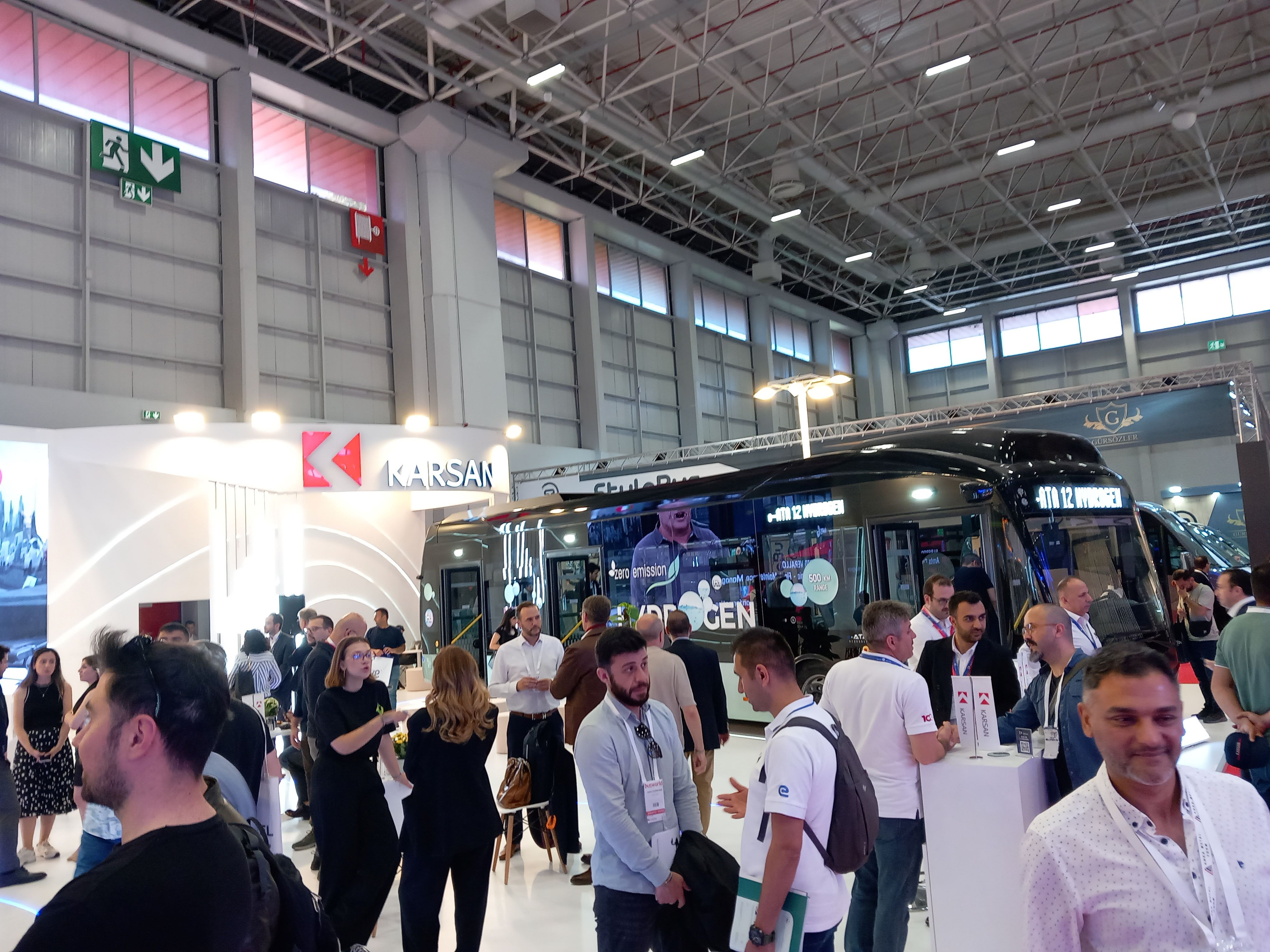
Karsan stand at Busworld Turkey 2024
Otherwise, the company remains intent on keeping its technological edge over its Turkish competitors. With American tech partner Adastec, Karsan has already deployed its autonomous bus in the USA and Norway, and further deployments are planned elsewhere in Europe, North America, and the Middle East. The two companies are also experimenting with teleoperation (or driving the vehicle remotely) and platooning (where several autonomous buses would be guided by a ‘leader’, which may or may not have a driver). Moreover, the company is investing resources into lightweighting: with the use of aluminium and carbon fibre materials, Karsan claims it has shed around 600 kilograms from the total weight of its buses, and next year it is aiming to expand this to 900 kg. Reducing the vehicle weight will decrease energy consumption; another measure which Karsan hopes will help with energy losses is using heat pump technology. This is being trialled in the place of conventional heaters in its e-Ata hydrogen range.
Although Karsan is nearly sixty years old, Arpacioğlu told press that the company possesses a “start-up” spirit. The company has used its considerable experience in producing other manufacturers’ vehicles to develop its own line of buses; at the same time, it is not so burdened by legacy vehicle production as other manufacturers are. The combination of these two factors enabled Karsan to scale up production of electric vehicles relatively quickly. Its goal now is to remain “one step ahead” of its competition, by integrating the latest technologies before everybody else.
1 The Jest is Karsan’s minibus range, built from the ground up as a 6-metre vehicle. The Atak and Ata are Karsan’s midibus and full-length (up to 18 metres) bus ranges, respectively.



